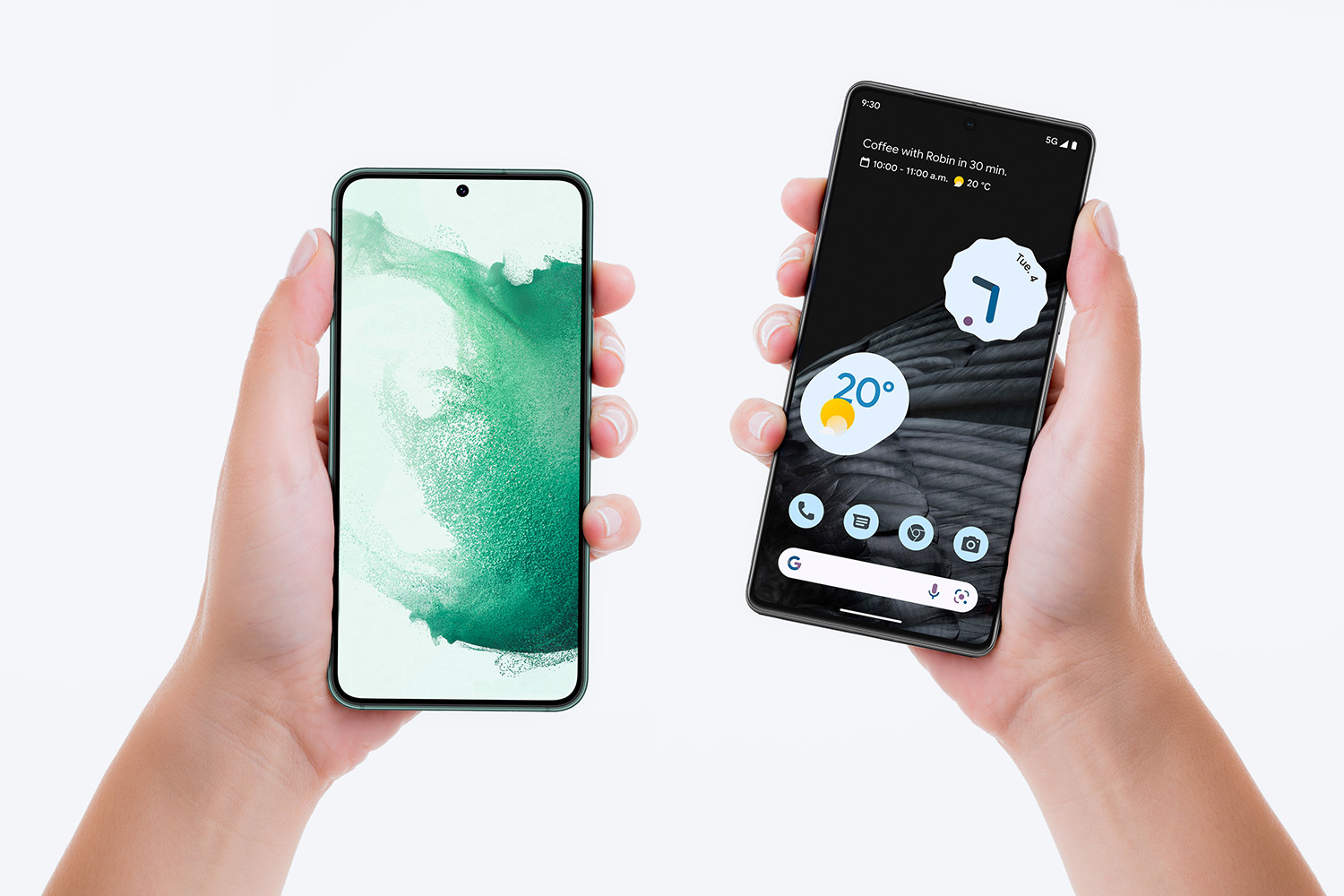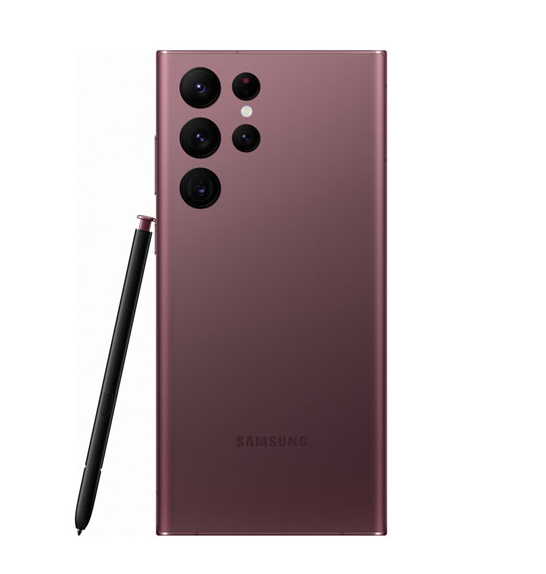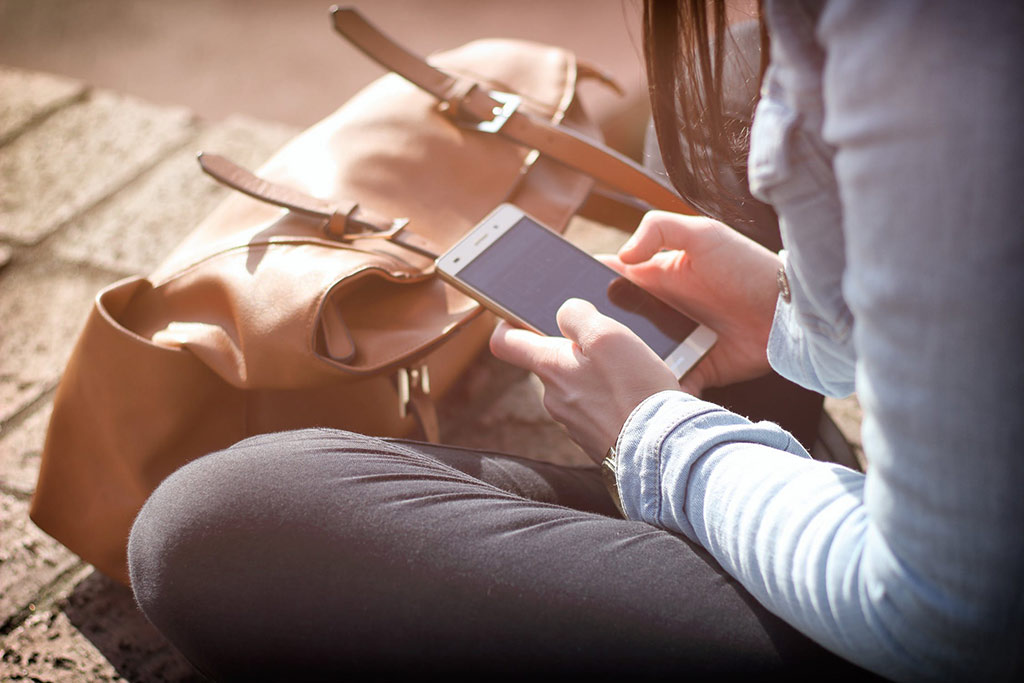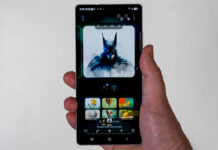
There is probably no other technology device more personal than a cellphone. Buying one requires some patience in knowing what you want to gain from it. Today’s cell phones are pocket-sized mobile computers delivering information in exciting ways. With more powerful processors, vivid larger screens, and vastly improved cameras, they have evolved to become indispensable for most people.
Table of contents
- Choosing a phone
- Buying outright or with payment plan
- Choosing a payment plan
- Trading in old cellphone
- How to pre-order a cellphone
- Accessories and protection
Choosing the right phone for you
Do you want the biggest screen? Maybe the best camera? Does the onscreen keyboard matter to you? Would you prefer something a little less feature-heavy, preferring a device that doesn’t offer the latest and greatest? That choice is entirely yours to make, and with a little research, you will be ready to make the right move. You can learn more about cell phones below; we also have an article to help you when purchasing a phone from Best Buy.
Operating system: iOS or Android
It often starts as a binary choice, but the technology that you’ve already been using can guide you. If you are comfortable using Apple products like an iPad or Macbook computer, then you might be more comfortable using an iOS device (Apple’s iPhone/iPad). Alternatively, if you already use an Android device (Samsung, Google, LG, etc); you may choose to stay with the operating system you know and are used to rather than switch. Note that within Android, the experience on each device can be uniquely different, despite the operating system being the same.

For example, Samsung Experience is a different overlay than LG’s UX. Google Pixel handsets use what’s called “stock Android,” an untouched version that has no overlay at all. With all that in mind, what you’ve used can determine which way you will go next. Plus, what you value most in a phone can help steer you in the right direction.
Cameras for photos and video

Phone cameras continue to advance and improve, and it shows with their ability to capture high-quality images. Manufacturers tend to reserve their newest and most sophisticated camera features for premium flagship models, but that doesn’t mean mid-range and affordable handsets don’t get to share in the spoils. Camera features often trickle down, which explains why output and performance improve at a faster rate with mid-range devices.
You do have to consider what kind of photos and video you want to shoot, and how much quality matters to you. If you want to vlog regularly, higher quality would definitely help to raise your production values. If it’s more for slices of life or travelling, you can determine what you think would be best for what you have in mind.
Storage space
Phones are getting bigger in screen size, and so is the storage capacity they cram inside. Content, like years worth of messages, plus photos and video, can take up ample amounts of storage. Plus, apps are now considerably larger in size than they used to be. If you subscribe to a music or video streaming service and want to download or save content to enjoy offline, you need space to store it all, even if you don’t technically own or keep it.
Android phones used to routinely offer memory card slots to expand on the internal storage, but those are disappearing now, so you have to consider how much space you think you will need. Better to err on the side of caution and go a bit higher than you might otherwise, but only if you were close to filling up your existing phone’s storage capacity.
The size of the phone

You may already have a good idea of what size you would prefer to carry with you going by the phone you currently have. It is worth looking at different options, though. While screens continue to grow, the bezels around them have been shrinking at the same time. That’s why some of today’s phones are actually smaller than some devices that came out in prior years, despite screens that are noticeably larger by comparison.
You should also factor in what kind of case you would want to use to protect the phone because it will make it thicker and heavier. There are smaller phones available, if that’s your preference, and plenty of bigger ones when you want more screen to look at.
Buying a smartphone outright versus buying with a payment plan
Certain terms associated with buying a phone can be confusing. One of these is the term unlocked (often contrasted with a payment plan). So you may see the options presented as “Purchase with payment plan” versus “Purchase Unlocked”. This may be confusing since under guidelines mandated by the Canadian Radio-television Telecommunications Commission (CRTC), carriers and retailers must sell all phones to customers unlocked. This went into effect in December 2017, and as a result, any phone you buy now is not going to be locked to a carrier.
Unlocking your phone enables you to use it with any compatible carrier. It also lets you swap out your carrier’s SIM card for a local one if you are travelling to another country and use service from a local carrier there.
However, though every phone is unlocked, if you buy a phone on a payment plan, you will very likely have to sign a contract and commit to the terms set out by one carrier. Usually these contracts span 2 years. Buying a cellphone outright allows you the flexibility to switch carriers and plans more readily.
Buying a phone outright
To be clear, when buying a phone outright, you are paying the full cost of the phone’s retail value. You’re not obligated to sign any contracts or agree to specific monthly payment plans at the time you purchase your phone when doing so. This gives you more freedom to decide on a carrier. You can more readily switch carriers compared to committing to a long-term payment plan, since there are no terms attached to owning a handset outright.
Buying a phone on a payment plan

When buying a phone on a payment plan, you are agreeing to a initial subsidized price for the phone set by the carrier offering it.
For example, the initial price of the phone may actually be hundreds of dollars less than the outright price of the phone—it may even be zero dollars! Carriers incorporate the cost of the phone into the monthly fee, including their fee for phone and data services on the device. So, you pay the balance of the price of the phone through the costs associated with the monthly rate plan you sign up for. Those generally come in two-year terms, and may include the option to “pay down” the balance earlier over that term.
The advantage in doing this is a lower cost upfront, though you may have more limited options as to what monthly plans you can choose from. Additionally, switching carriers while still under contract will require you to pay off the balance first.

Choosing a payment plan for your smartphone
Plans change often, and incentives along with them. With talk and text now virtually unlimited, except for specific entry-level plans, the key consideration is how much data goes with it. This can vary a great deal, so you have to weigh how much you consume in a given day, week or month on a current plan. If you routinely go over your limit, it might be time to get more.
Compare plans and find what gives you the best bang for the buck. With an unlocked phone and several years of “loyalty” with one carrier, you may have room to negotiate a good deal that works best for you. Having an unlocked phone allows you to shop around without making the kind of commitment required for a two-year payment plan.
Your plan may include a roaming incentive, as some carriers already offer. These let you travel and use your own SIM card and plan as if you were still at home. It does come with an additional daily charge, but it means you get the convenience of using your phone like you would every other day.
Prepaid Phones
There is one more way to buy a cell phone that you may want to investigate. Should a contract and monthly rate plan be too much for your needs or budget, you can always try a prepaid phone instead.
Prepaid phones come at an affordable outright price with no contract or monthly plan. You pay as you go, meaning you pay for services like talk, text and data prior to using them. You pay for exactly what you use, making them a good option for people who want to stay in touch, yet only need limited service to do it.
That’s different from a monthly rate plan that charges you after you’ve used those services at the end of a monthly billing cycle. It doesn’t mean you can’t opt to sign up for a monthly plan with a prepaid phone, if you want to. You certainly can. That’s why some people find them highly flexible.
Trading in your old cell phone

Your old phone may have trade-in value. It could be as high as $300 in savings on the purchase of a new phone. Alternatively, some trade-ins grant a gift card that may be worth up to $400. It largely depends on the model you’re looking to trade in. Either way, you won’t have to bring it into a store to learn how much it might fetch. Get a quick estimate on the Best Buy website by confirming a few details.
In the event your device has no value, you can often still get $50 off the price of a new phone upon activation. One thing to remember is that you can unlock your older phone free of charge from your carrier. It’s a good idea, as it might have a positive effect on the overall trade value. You could also opt to sell it elsewhere yourself and use the proceeds toward a new device.
No matter what you do when trading in an older device, make sure to back up important data, and then factory reset it to clear your personal history before visiting a store. To learn more about how to go through the process, check out the Trade-In Program for more details.

Setting up your new cell phone
You can start setting up your phone once it’s in your hands. It’s now easier to transfer over all your data from an older device to your new one, so you can pick up where you left off. That can include all your contacts, messages, emails, apps, and more.
The process isn’t always the same and is usually easier when the two devices are from the same brand. For example, with an Apple iPhone, you can back-up your older phone’s data to iTunes on a computer or using iCloud. From there, you would simply restore that backup to a new iPhone.
For Android phones, like those made by Samsung, LG, Google, OnePlus and others, each brand has a method to enable data transfer. They can also be interoperable, so if you’ve moved on to a different make and model, you will be able to move everything over.
Be aware that the SIM card controls your cellphone service, not the data on your phone. Whether you slide in a new or existing SIM card, that card will determine your service. Whomever you signed up with, and whichever plan you’ve agreed to, will work with your new handset. Data, like contacts, is no longer stored on SIM cards, so you won’t have to worry if you make the switch to something new.
How to pre-order a cell phone in advance
The most popular phones are often available for pre-order in the days or weeks leading up to the official launch. That way, you can get your hands on one the first day they become available without having to wait. Pre-ordering also enables you to secure the exact model, and colour, you want—no worrying that it will sell out before you get to your local Best Buy. So, you can be sure you will get exactly the model, colour, and storage options you prefer.
If you already know what you’re looking for, it’s a great way to ensure you get it. If you’re unsure, look at neatly laid-out options to help you make a decision. In addition, pre-ordering a cell phone with an outright purchase (see below to learn more about buying phones outright) will often guarantee home delivery. Visit your chosen Best Buy location to finalize the contract and pick up your phone if you want to buy it outright and opt for a payment plan. Note that pre-ordering using either option (outright or payment plan) will ensure you get the phone of your choice as soon as the pre-order period ends and the phones are available.
Many people choose to pre-order for its convenience and expediency. Also, sometimes pre-orders include additional incentives. These could be bundles that include accessories to go with the phone, or gift cards to use toward whatever items you like, like a case or car charger.

Accessories and protection

A cell phone is not only a personal device, it’s also something you want to keep safe. That can range from turning on tracking features in case it’s lost or stolen, to protecting it with a case and a screen protector. There are a wide variety of case styles available that offer fashionable designs, as well as rugged builds capable of withstanding some punishment.
Newer models are supporting wireless charging, where you may appreciate the convenience of filling up a battery cord-free. You may want truly wireless headphones to wirelessly stream audio from your new cell phone.
The photographer in you may want to buy a lens or two to attach to your phone’s camera. A selfie stick or drone could add to your creativity. Your cell phone is a powerful toy and tool all at once—especially with the right pieces involved.
Take the next step

Having a good cell phone can feel empowering because of how it helps you communicate, create and consume. Streaming content, social media, and productivity are but a few things a handset can do nowadays, and they only keep getting better.







